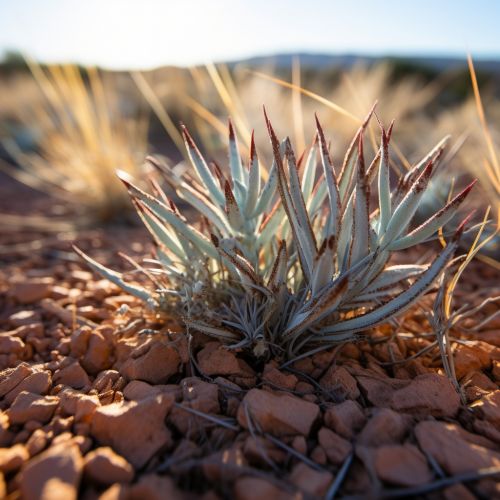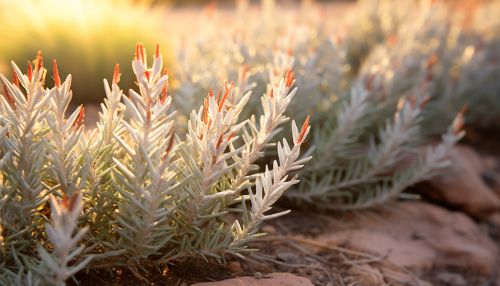Drought tolerance
Introduction
Drought tolerance refers to the degree to which a plant is able to withstand water scarcity. It is a complex trait that involves multiple physiological and biochemical processes, and is influenced by a plant's genetic makeup, its growth stage, and the severity and duration of the water deficit. Drought tolerance is a key determinant of plant survival and productivity, particularly in arid and semi-arid regions where water scarcity is a common occurrence.


Types of Drought Tolerance
There are three main types of drought tolerance in plants: drought avoidance, drought resistance, and drought escape.
Drought Avoidance
Drought avoidance is a strategy where plants maintain high water status during periods of drought. This can be achieved through various mechanisms such as deep rooting, which allows the plant to access water from deeper soil layers, or through modifications to leaf structure and function that reduce water loss through transpiration.
Drought Resistance
Drought resistance, on the other hand, refers to the ability of a plant to maintain function despite low water status. This can be achieved through mechanisms such as osmotic adjustment, where the plant accumulates solutes in its cells to maintain cell turgor pressure, or through the production of protective compounds that prevent damage to cellular structures.
Drought Escape
Drought escape is a strategy where plants complete their life cycle before the onset of drought. This is common in annual plants in arid regions, which germinate, grow, and reproduce quickly following rainfall, and then die off, leaving behind seeds that can survive the dry period.
Genetic Basis of Drought Tolerance
The genetic basis of drought tolerance is complex, as it involves multiple genes and gene interactions. Advances in genomics and bioinformatics have facilitated the identification of drought tolerance genes and the elucidation of their functions. These genes are often involved in key physiological processes such as water uptake and transport, photosynthesis, and stress response.
Breeding for Drought Tolerance
Breeding for drought tolerance involves the selection of plants with desirable traits and the use of these plants in breeding programs to develop new, drought-tolerant varieties. Traditional breeding methods, such as selective breeding and hybridization, have been used for this purpose. More recently, genetic engineering and marker-assisted selection have been employed to enhance the efficiency and precision of breeding for drought tolerance.
Drought Tolerance and Crop Production
Drought tolerance is a critical trait for crop production, particularly in regions where water scarcity is a common occurrence. Drought can significantly reduce crop yield and quality, and can lead to crop failure in severe cases. Breeding for drought tolerance is therefore a key strategy for improving crop productivity and ensuring food security in the face of increasing water scarcity and climate change.
